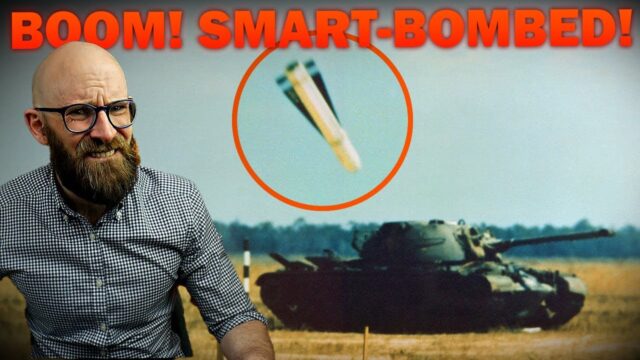“Unveiling the Secrets: How Innovations in Technology are Redefining the Future of Precision Weaponry”
The U.S. Navy also experimented with guided munitions. Inspired by the early successes of the German Fritz X and Henschel Hs 293, in late 1943 the Navy issued a requirement for an unpowered anti-ship glide bomb, the contract for which was awarded to McDonnell Aircraft in the summer if 1944. Dubbed the LBD-1 Gargoyle, McDonnellâs weapon resembled a small unpowered aircraft 2.5 metre wingspan, a v-tail, 3-metre fuselage containing a 1,000-lb armour-piercing bomb. The Gargoyle was designed for use by carrier-based aircraft and could be released up to 8 kilometres from the target, whereupon the bombardier would guide the weapon using radio command and flares in the tail. Just before impact, an Aerojet solid-rocket motor in the rail was ignited, providing 4.4 kilonewtons of thrust for 8 seconds and accelerating the weapon to 970 kilometres per hour. Despite the Gargoyleâs initial promise, however, the development program was plagued by technical difficulties, such that the first test flight did not take place until July 1946 – nearly a year after the end of the war. Trials dragged on for another four years until, in December 1950, the Gargoyle project was finally cancelled.
Far more successful than the Gargoyle was the Bat, which arguably holds the title of the most sophisticated guided missile ever deployed during the Second World War. The Bat originated in 1941 as an RCA project to build a television-guided anti-ship missile similar to the Hs 293D. In June 1942 the design was modified to use semi-active radar guidance, wherein the missile homed in on reflections from a radar beam projected by the attacking aircraft. Originally known as the Pelican, the weapon was designed by the National Bureau of Standards in collaboration with the Navy Bureau of Ordnance, MIT, Bell Telephone Laboratories, and Bendix Aviation. It was unpowered, had a length of 3.6 metres, a wingspan of 3 metres, weighed 270 kg, and was armed the same 1,000 pound general purpose bomb as the AZON. Power for the controls was provided by small wind-driven generator.











